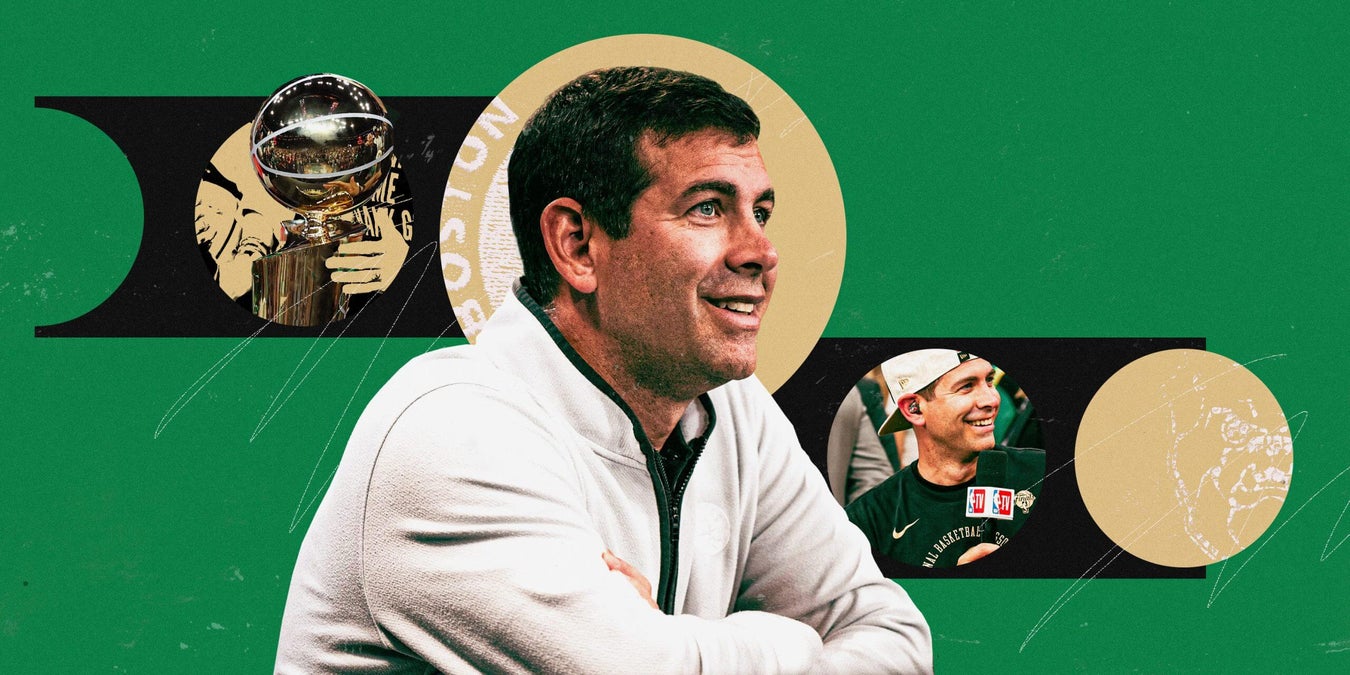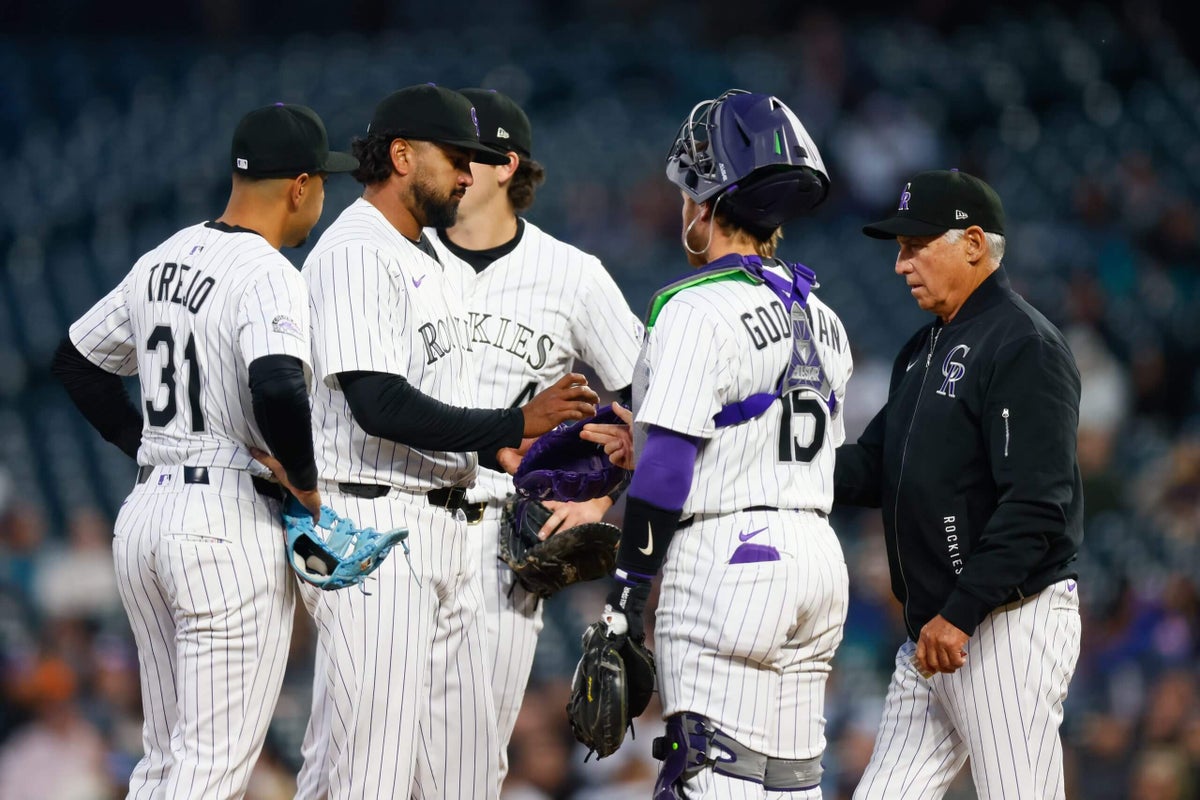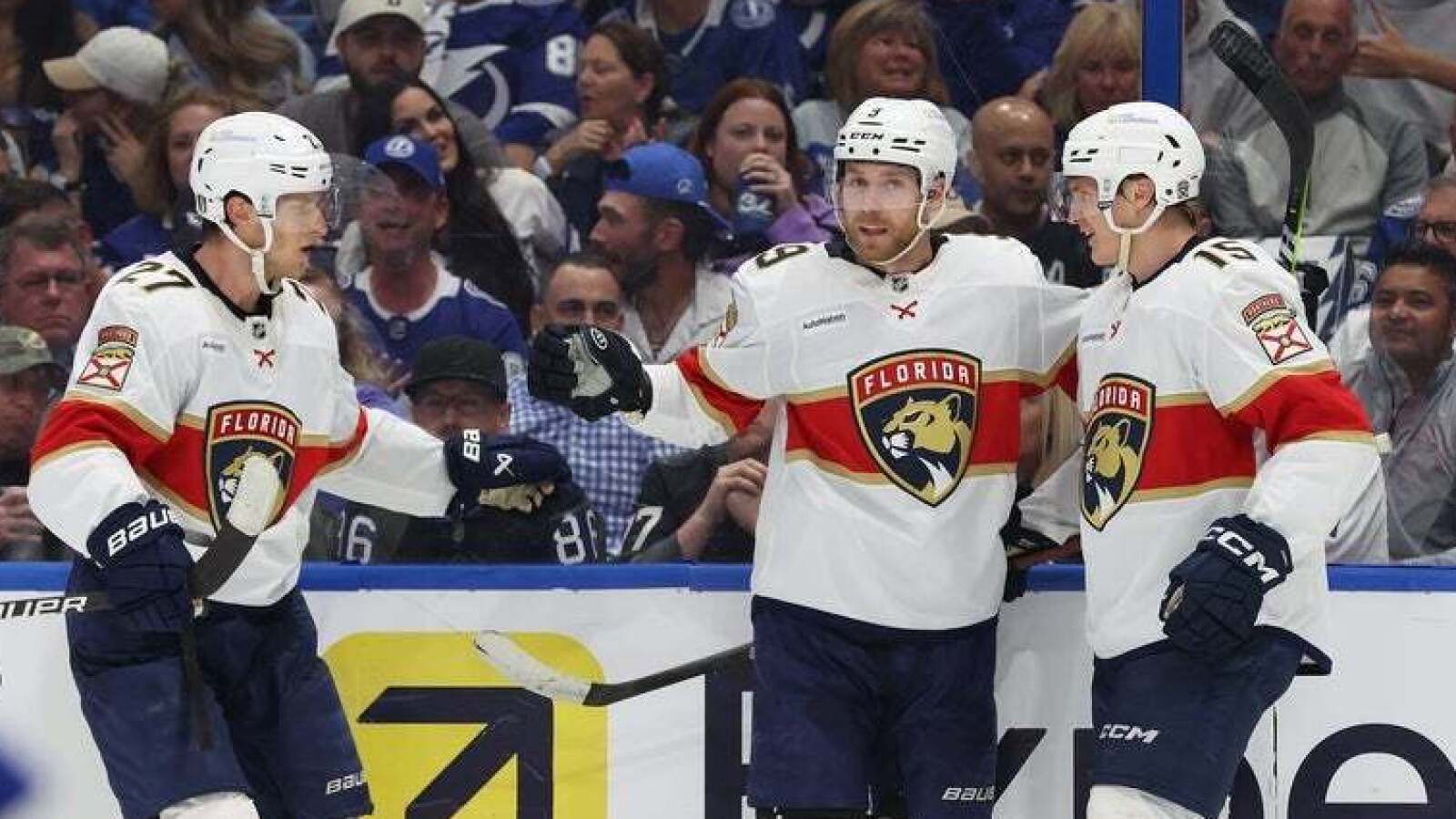Before folding himself into the car for the eight-hour drive to Birmingham, Ala., Brad Stevens wondered aloud why he would travel so far to see Ronald Nored’s high school basketball game. Nored, who had initially committed to Western Kentucky, had reopened his recruiting after head coach Darrin Horn left the school for the same position at South Carolina. Stevens, the Butler head coach, had tentative interest in landing Nored but wasn’t fully sold on the prospect.
Advertisement
“I’ve got to get in this car and drive to Birmingham, Alabama,” Stevens told some of his staff, including assistant coach Terry Johnson. “Go watch a kid that can’t dribble. He can’t shoot. He can barely pass.”
According to Johnson, Stevens knew Nored’s coach at Homewood High, where Nored made the all-state team as a senior. Stevens trusted the coach, who stressed Nored would fit well at Butler. Stevens had heard all about Nored’s top-notch leadership, but had questions about his game.
When the coaching staff watched game film of Nored, Matthew Graves, a Butler assistant who would later become the head coach at Indiana State, recalled wondering if the guard was good enough to recruit. At 6-foot, Nored didn’t shoot the ball well from outside. He sometimes struggled with turnovers. He didn’t check all the boxes that the Butler coaches normally looked to find in a point guard.
As Johnson remembered, Stevens asked a question of his assistant coaches before leaving on the long car ride:
“Why am I doing this?”
To land a prospect who would become one of Butler’s most valuable players. Nored defended. He competed. As importantly as anything else, he had a presence on the court and in huddles. He lifted his teammates’ energy. He prioritized only what was best for his team.
By the time Stevens returned from the recruiting trip, he had a very different message for his assistant coaches. He could see that Nored’s value would exceed his basketball skill set.
“Yes,” Stevens told his staff, according to Johnson. “That’s what we need.”
Nored wasn’t just good enough to play at Butler, but good enough to start every game of his freshman season and lead the team to back-to-back appearances in the national championship game. He finished his career in a tie for Butler’s all-time steals record and ranked second in school history in assists. He won the Horizon League Defensive Player of the Year award twice, including one season when he finished in a tie. From his first day on campus, he elevated the Butler program.
Advertisement
“He was the perfect match,” said Johnson.
Nored also became a prime example of Stevens’ ability to evaluate what puzzle pieces his team needed. Stevens has since proven that his talents would translate into an NBA front office by finishing the construction of what might be the league’s most complete roster, but it was at Butler where he first showed his gifts for identifying overlooked players and building a team of complementary parts. Thanks to his team-building wisdom, the Celtics will enter Game 1 of their second-round series against New York on Monday with a strong chance to defend their championship.
At Butler, where he had a 166-49 record as a head coach and guided the team to the first two Final Four appearances in school history, Stevens revealed the tenets he considered most crucial to winning basketball while demonstrating the vision that would one day turn him into a championship-winning president of basketball operations. Based on how he approached stitching together rosters back then, his former assistant coaches and players have not been surprised to see Stevens value all the same characteristics with the Celtics he targeted at Butler. Stevens always wanted to find talent, but believed a successful team involved far more than that.
“Brad understands the most important thing in any organization, whether it’s the business world or sports world, is people,” said Zach Hahn, who played at Butler under Stevens. “And he surrounds himself and finds people that live by the same standards that he lives by.”

Brad Stevens put the lessons he learned from team building at Butler to use in the NBA. (Frederick Breedon / Getty Images)
Butler basketball rocketed into national prominence soon after Stevens took over as head coach, but built the foundation for success before his tenure under coaches such as Barry Collier and Todd Lickliter. During Stevens’ final season as an assistant coach under Lickliter, the team reached the Sweet 16 before falling to Al Horford’s Florida Gators, the eventual national champions.
Advertisement
Years before joining the Big East, the coaches at Butler were always fighting to overcome the realities of a mid-major program. Since they couldn’t necessarily target five-star recruits, they needed to create their own edge.
“We were very particular with our recruiting,” Graves said.
Butler typically sought players from winning programs. It wanted players willing to put the team above individual success. When the assistants under Stevens attended high school games or AAU games to recruit, they weren’t just evaluating a player’s physical gifts or basketball IQ. They observed how players handled themselves in huddles. How they dealt with problems on the court. How they behaved when they were on the bench or in foul trouble.
As a staff, Graves said the coaches would discuss all of those details.
“The biggest thing in looking for guys was, did they fit the team concept?” said Graves, now the head coach at Indiana State. “And what I mean by that is, were they competitors? Did they care about winning? And were they great teammates? How did they act when they weren’t playing well or when things weren’t going well for them?”
Every interaction mattered. Micah Shrewsberry, a Butler assistant under Stevens who followed Stevens to the Celtics and is now the head coach at Notre Dame, said the Butler coaches scoured for information about players’ personalities like NBA teams do before the draft. Once they were confident a high schooler was talented enough to play at Butler, their focus shifted more toward his character. Johnson, now an assistant at Purdue, said he would go to schools and ask teachers and janitors about a player. Coaches and parents would usually praise a player to anyone recruiting him, but someone else might share more useful information.
“Are you a snob?” Johnson explained. “Is your chest too big, too high, when you walk through the hallway to talk to people? Or, if you’re walking by pieces of trash, would you pick it up? We looked out for things like that. Or even something as simple as how do you warm up? Does somebody need to motivate you or are you bringing energy to your teammates?”
Advertisement
Stevens wanted versatile players. He wanted skilled big men. He wanted lineups with multiple ballhandlers. He wanted winners who would habitually do the right things.
Stevens cared about how the pieces fit together on and off the court. In recruiting, he instructed his assistant coaches to trust their own vision for how a player would fit in the program.
“That approach was more like putting a puzzle together,” said Johnson.
Stevens told his assistants not to worry about recruiting rankings or any media reaction. He wanted them to look at a player’s strengths, not necessarily their weaknesses. How would that player fill a Butler need? He encouraged his assistants to think outside the box and believe in their evaluations.
“If you feel like that’s the person that helps your program and you see the vision for that player, go for it,” Graves said. “It doesn’t matter what the outside people think. And I think that’s a really powerful thing. And a lot of people get caught up in caring what rankings (players) are and all that. And Brad didn’t. And we talked about that a lot, finding the diamonds in the rough, but it really was more about just trusting your eyes and your evaluation.
“You know what you want to coach. You know what works in your program. So, go find it.”

Brad Stevens coaching his Butler Bulldogs in 2010 at the NCAA Tournament. (Kyle Terada / USA Today)
Parts of the Butler culture were established before Stevens took over the program.
Hahn, who lived about an hour from campus, would drive to play pickup with the team during his time in high school, while Lickliter was still the head coach. Even in pickup games, Hahn said the Butler players would run the flow offense the team used in real games, which they called “21 D.” On defense, they hedged ball screens, just like they would do in the regular season. Aiming to play within the framework of the team’s style, they would typically avoid the bad shot selection and questionable effort that often plagues pickup games.
Advertisement
“The crazy thing was just like, watching, each guy really just played their role,” said Hahn. “Nobody — nobody — tried to do too much. Nobody tried to take over if it wasn’t their role. Everything was so systematic.”
The players set rules for their games. Shrewsberry said that when a younger player would bring a phone near the court, one of the older players would alert him that phones weren’t allowed during pickup time. When the games finished, the players didn’t want everybody scattering to their phones and spending their time alone, scrolling.
Hahn said the players would police themselves. When one player didn’t try hard enough, a teammate would chew him out. Even without the coaching staff present, thanks to NCAA rules that prevented them from watching offseason pickup games, the entire operation was structured. The younger players could learn about the culture just from watching the juniors and seniors. Or from listening to them. Their level of communication was rare.
“Everything was just so competitive,” said Hahn. “And it wasn’t that coaches were yelling at you. It was nothing like that. It was the players that they had were all intrinsically motivated individuals.”
Those were the type of individuals Stevens sought. Because he wasn’t the kind of coach to yell at his teams consistently, he needed players who required no such motivation.
“It’s not that they weren’t gonna be held accountable, but we weren’t a program that, you know, we’re gonna run guys on the line, we’re gonna cuss at them and just make them play out of fear,” said Graves. “That wasn’t how we were gonna be successful. It was (finding) guys that really cared about winning and they came to work, and that was what they did.”
Butler featured several stars during Stevens’ tenure. Gordon Hayward, who reunited with Stevens in Boston, and Shelvin Mack went on to play in the NBA. Matt Howard was an honorable mention All-American in 2009. Still, it was beyond improbable for a team from the Horizon League to reach two consecutive national championship games. No team in the conference’s history had ever reached the Final Four before.
Advertisement
Stevens searched for players like Nored who would accentuate their teammates daily. The culture of work established at the school helped him avoid the wrong fits. During one pickup game late in his career, Hahn noticed a recruit failing to hustle back on defense. At some programs, upperclassmen might have prioritized keeping the recruit happy in hopes he would commit to the school. The uber-competitive Hahn wasn’t going to ignore the lack of effort.
“I let him have it,” Hahn said, “which was kind of my role.”
The next day, Stevens called Hahn into his office and asked what he said to the young prospect. At first, Hahn thought Stevens was angry after learning Hahn had used some language he shouldn’t have used with a 17-year-old. Butler ended up missing out on the recruit, who became an all-league player at another college. Hahn thought the player was talented, but didn’t fit what they wanted at Butler — players who would be desperate to win even during open gym.
“Brad basically said, ‘Well, if he can’t handle you, then he can’t handle our culture. He can’t handle the competitiveness that we want in our guys,’” Hahn recalled.

Brad Stevens coaching the Celtics in 2019, before moving to the front office in Boston. (Maddie Meyer / Getty Images)
Stevens had no experience in an NBA front office when the Celtics named him Danny Ainge’s replacement in June 2021. Those with Stevens at Butler still believed he was more than qualified for the job.
“Just being around him for so long, you’re like, he’s going to crush this,” said Shrewsberry. “He’s going to absolutely kill it.”
The former Butler assistants have nodded their heads several times while watching the way Stevens has assembled the Celtics roster. They see his impact in the way his team has consistently avoided drama, secured buy-in and acquired players committed fully to their development. He has looked for all the same qualities he would have wanted at the school.
Advertisement
“The Jrue Holiday and Derrick White (trades), I’m like, those are Brad guys right there,” said Shrewsberry. “Good dudes. Great reputations. (They) have come from winning, really good places. Selfless. (They) can score and do stuff, but really dig in and guard and compete. I’m like, yeah, those two dudes fit. They fit him.”
The whole team does.
“The biggest thing he did (at Butler) was he never held anybody back,” said Hahn. “He always let people be who they were because he knew he recruited the right kind of guys in the system. It’s the same thing he’s done with Boston.
He figured out a pattern of success and had some really good talent, but he’s letting guys be who they are. Whoever the alpha is, is the alpha, but the (Payton) Pritchards of the world are just as important as the Jaylen Browns and the Jayson Tatums, and he treats them that way. And so, I think he empowers players by treating everybody the same, but more importantly, allowing people to be who they are and trying to get them to just soar with their strengths.”
With Stevens as the architect, putting the finishing touches on a roster Ainge began building, the Celtics knocked the Magic out of the first round in five games after completing their second consecutive 60-win regular season. When the playoffs continue on Monday, the Celtics will continue their journey to become the NBA’s first repeat champion since the Warriors in 2018.
Stevens first stepped into Ainge’s former role one day after a 36-36 season that ended with a first-round playoff exit. At the time, the organization’s future was filled with uncertainty. That day now feels long ago. Over the four years since then, Stevens has rearranged almost the entire supporting cast. He has constructed the Celtics according to his basketball ideals.
“He really just wants to be around good people, people of high character,” said Johnson. “And that’s where it starts, getting the right guys on the bus. And then, from a basketball standpoint, he tries to prioritize individual growth. And then, collectively, we all achieve something bigger than ourselves.”
(Illustration: Kelsea Petersen/ The Athletic; Photos: Maddie Malhotra/ Getty Images, Joe Murphy / Getty Images, Adam Glanzman / Getty Images)



